Nuremberg holds a notorious place in history as the secret capital of the Holy German Roman Empire and the propaganda center of the Third Reich. Exploring this grim past provides a visceral and harrowing experience. Visitors can trace the drafting of the Nuremberg Laws, witness the massive Nazi party rallies, and visit the sites of the post-war trials of war criminals. This English-led tour offers a comprehensive look at Nuremberg’s dark legacy, underscoring the brutality of the Nazi regime and its lasting impact. For those seeking to understand this pivotal chapter in European history, this tour promises an eye-opening and thought-provoking journey.
Key Points
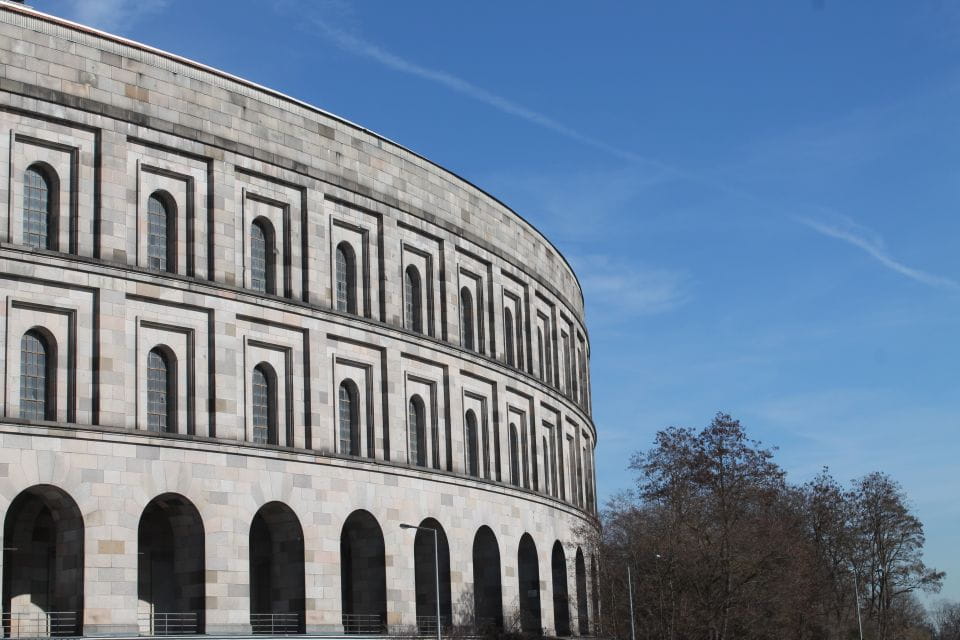
- Explore Nuremberg’s role as the propaganda center of the Third Reich, including its historic Nazi party rallies and the drafting of the notorious Nuremberg Laws.
- Visit the Zeppelin Field, the site of massive Nazi party rallies, and Flossenburg concentration camp to gain a visceral understanding of the Third Reich’s power and brutality.
- Discover Nuremberg’s rich Jewish heritage and the devastating impact of the Nazi regime through landmarks like the Old Synagogue and the Jewish Cemetery.
- Learn about the landmark Nuremberg Trials, where top Nazi leaders were prosecuted for war crimes and crimes against humanity, and the precedents they set in international law.
- Gain insights into Nuremberg’s legacy as the secret capital of the Holy Roman Empire and its symbolic significance in the Nazi propaganda machine.
Nuremberg’s Historic Significance
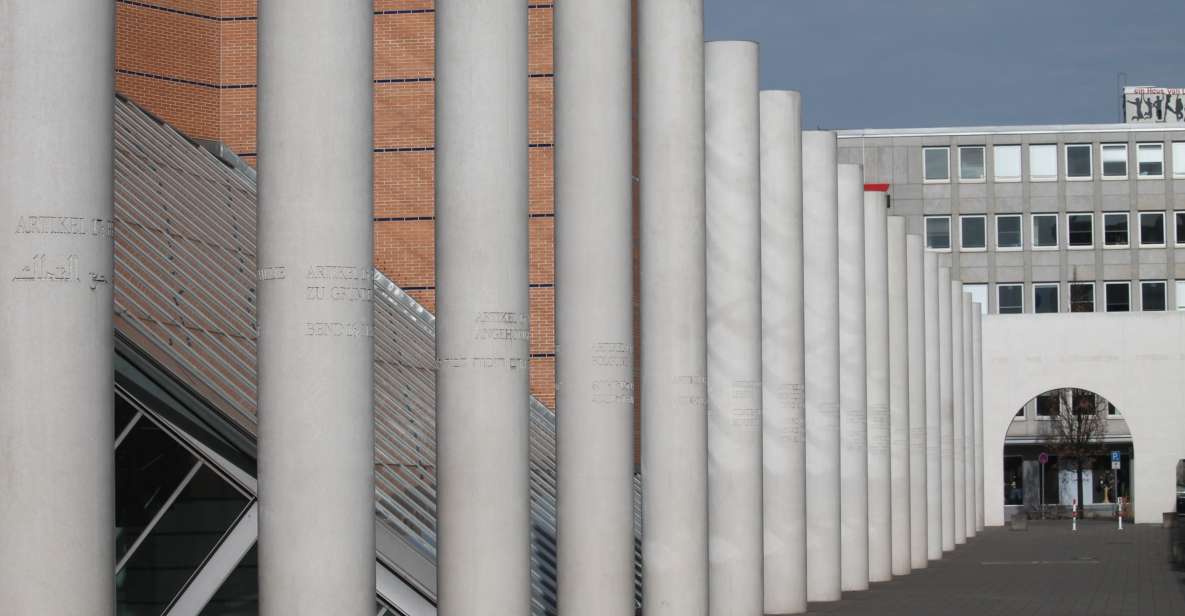
Nuremberg’s legacy as the secret capital of the Holy German Roman Empire and its subsequent designation as the propaganda center of the Third Reich exemplify its historic significance.
The city was chosen by Hitler as the heir to Germanic traditions, serving as the site for massive Nazi party rallies that showcased the regime’s power and ideology.
Nuremberg’s symbolic importance was cemented by the drafting of the notorious Nuremberg Laws, which codified anti-Semitic policies, as well as the trials of Nazi war criminals that took place in the city after World War II.
This complex history has made Nuremberg a poignant destination for those seeking to understand the dark chapter of the Third Reich.
Fascinated by Nuremberg's past? More historical tours we've covered
Propaganda Center of the Third Reich
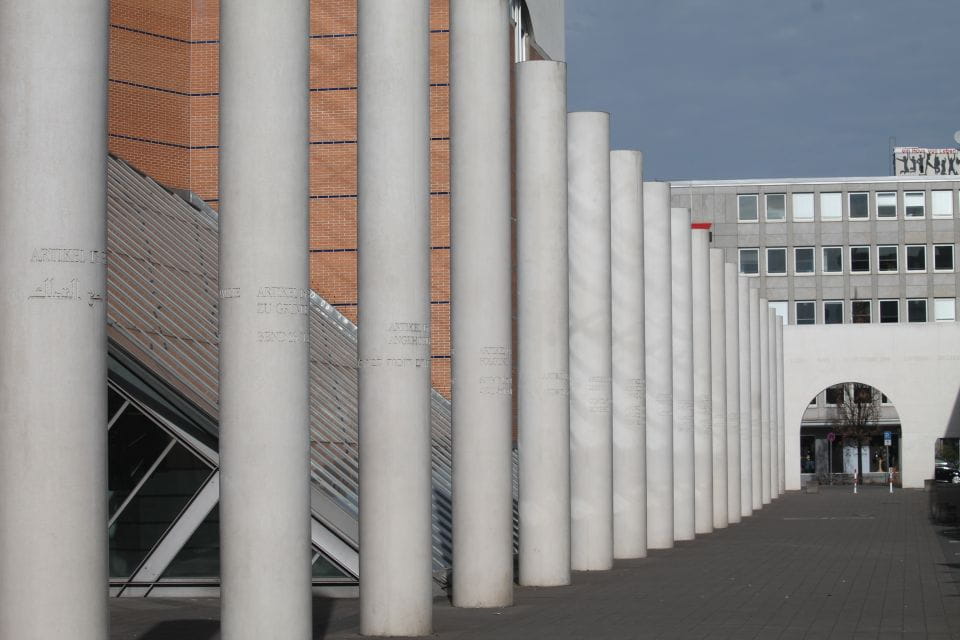
The Nazis transformed Nuremberg into the propaganda center of the Third Reich, leveraging the city’s historic significance to stage elaborate rallies and demonstrations that showcased their power and ideology.
Nuremberg was chosen as the ideal location for these events due to:
- Its legacy as the secret capital of the Holy German Roman Empire, lending a sense of historical legitimacy.
- Its architecture and public spaces that could accommodate massive crowds.
- The symbolic importance of the city’s medieval castle and churches.
- The ease of controlling and policing large gatherings in the city’s compact layout.
These carefully orchestrated events, like the annual Nazi Party Congresses, were used to indoctrinate the public and project an image of unwavering unity and strength.
Nuremberg Laws and Anti-Semitism
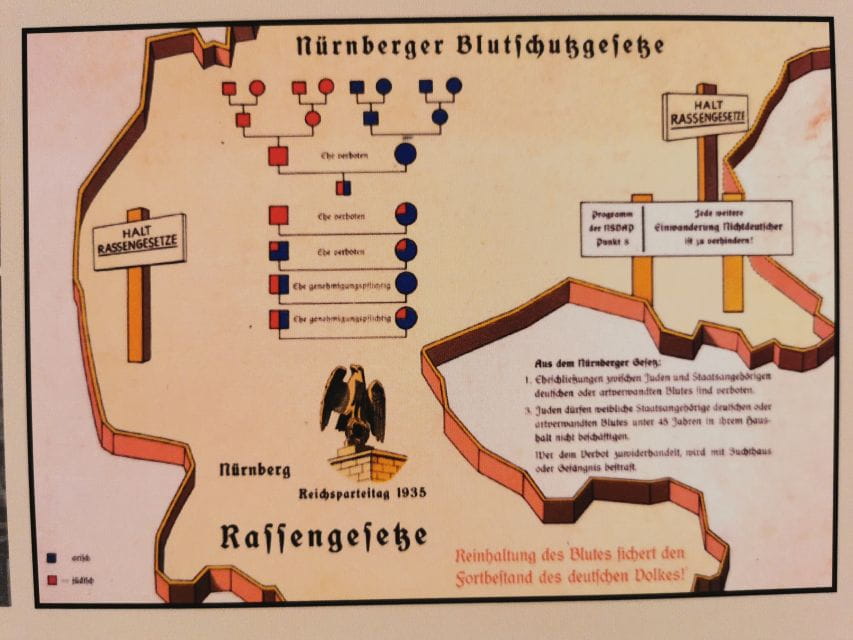
The Nuremberg Laws, written by Nazi official Wilhelm Frick, codified the racist and anti-Semitic policies that stripped Jews of their German citizenship and prohibited intermarriage between Jews and non-Jews.
These laws were designed to exclude Jews from German society and paved the way for their systematic persecution.
Anti-Semitism was further promoted by Julius Streicher, the publisher of the virulently racist newspaper Der Stürmer.
Under Nazi rule, Nuremberg became a center for the propagation of this hateful ideology, with the annual Nazi Party rallies held in the city.
This tour explores the dark legacy of these events and how they contributed to the rise of the Third Reich.
Nazi Party Congresses in Nuremberg
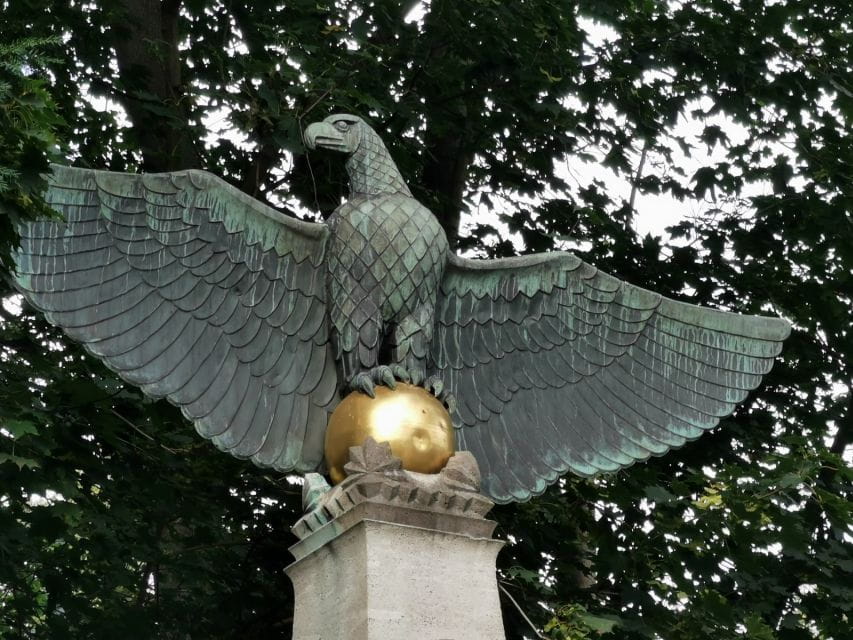
Nazi Party rallies were held annually in Nuremberg, transforming the city into a propaganda stage for the regime’s ideological message. These grandiose events attracted massive crowds of supporters and allowed the party to showcase its power and control over the German people.
Key aspects of the Nuremberg rallies included:
- Elaborate staging and choreography designed to evoke a sense of spectacle and nationalism
- Speeches by Hitler and other Nazi leaders that reinforced the party’s racial ideology and vision for the Reich
- Parades of military forces and paramilitary organizations to demonstrate the party’s strength and unity
- Rituals and ceremonies that sought to imbue the events with a quasi-religious significance.
Nuremberg Trials and Their Legacy
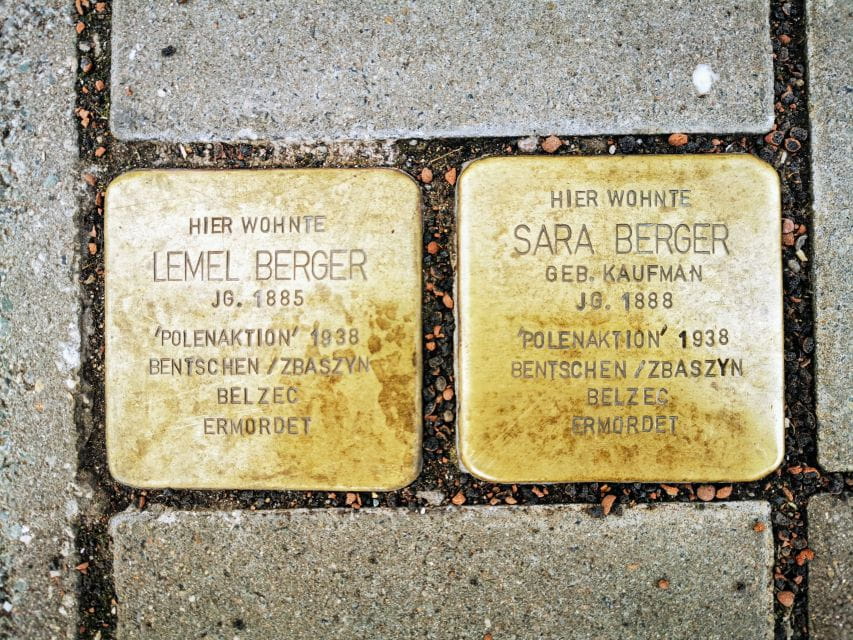
Following the defeat of Nazi Germany, a series of trials were held in Nuremberg to prosecute the top leaders of the Third Reich for war crimes and crimes against humanity.
These trials, known as the Nuremberg Trials, represented a landmark moment in international law and set important precedents for holding individuals accountable for atrocities committed during wartime.
The trials examined the actions of Nazi officials, including Hermann Göring, Rudolf Hess, and Albert Speer, and resulted in the conviction and sentencing of many high-ranking Nazis.
The legacy of the Nuremberg Trials continues to shape international law and the way the world responds to human rights abuses, genocide, and other war crimes.
Exploring the Jewish Quarter
On the Nuremberg tour, visitors explore the historic Jewish quarter, which offers a window into the city’s long and complex relationship with its Jewish population.
The quarter features several key sites:
- The Old Synagogue, which dates back to the 11th century and was a center of Jewish life until its destruction by the Nazis.
- The Memorium Nuremberg Trials, which chronicles the post-war trials of Nazi leaders.
- The Jewish Cemetery, a solemn reminder of the community’s tragic fate.
- The Schöner Brunnen, a 14th-century fountain that was once a gathering place for the city’s Jewish residents.
Through these landmarks, the tour provides an insightful look at Nuremberg’s Jewish heritage and the devastating impact of the Nazi regime.
Visiting Zeppelin Field and Flossenburg
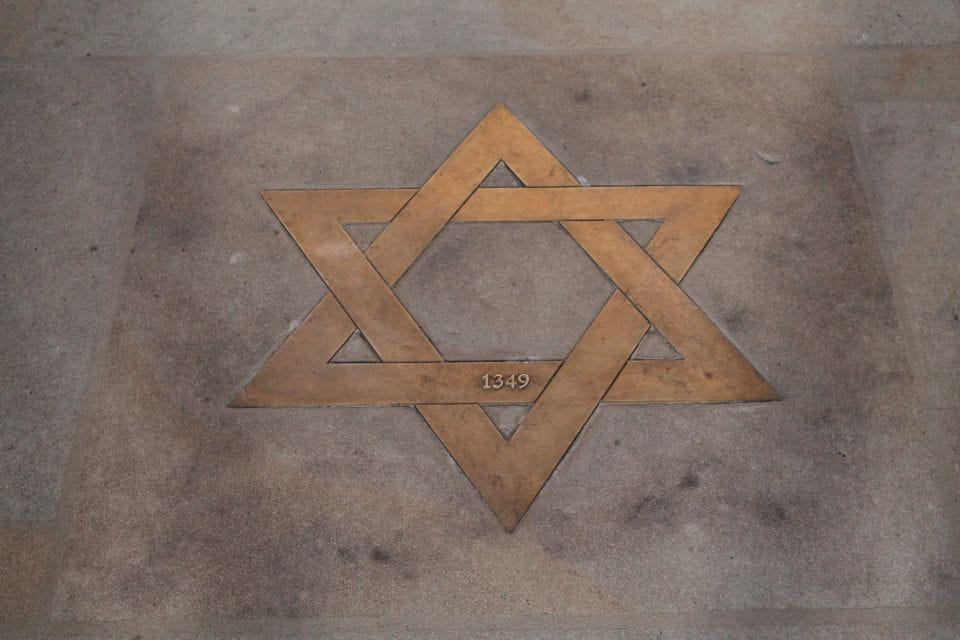
The tour then proceeds to Zeppelin Field, the massive parade grounds where the Nazi Party held its infamous rallies, offering visitors a chilling glimpse into the scale and pageantry of the regime’s propaganda efforts. Visitors can stand on the balcony where Hitler delivered speeches to the adoring crowds below, and imagine the atmosphere of power and nationalism that permeated these events.
Afterward, the tour visits Flossenburg concentration camp, a sobering reminder of the horrors of the Holocaust and the immense human suffering inflicted by the Nazi regime. Touring the camp’s barracks, gas chambers, and crematoriums provides a visceral and harrowing experience that underscores the true brutality of the Third Reich.
Tour Logistics and Inclusions
The Nuremberg: Historic Third Reich Tour in English provides a comprehensive package that covers the key historical sites and events related to the Nazi regime. It includes a professional guide who leads the 3-hour walking tour, providing in-depth commentary and insights into Nuremberg’s pivotal role as the propaganda center of the Third Reich.
The tour includes the following:
- Guided exploration of the Jewish quarter in Nuremberg.
- Visit to the infamous Zeppelin Field, the site of Nazi Party rallies.
- Exploration of the Flossenburg concentration camp, a lesser-known but significant location in the Third Reich’s history.
Wheelchair accessibility and private group options are available to accommodate diverse needs.
While the tour doesn’t include food, drinks, or transportation, it offers a comprehensive and immersive experience that brings Nuremberg’s dark past to life.
Frequently Asked Questions
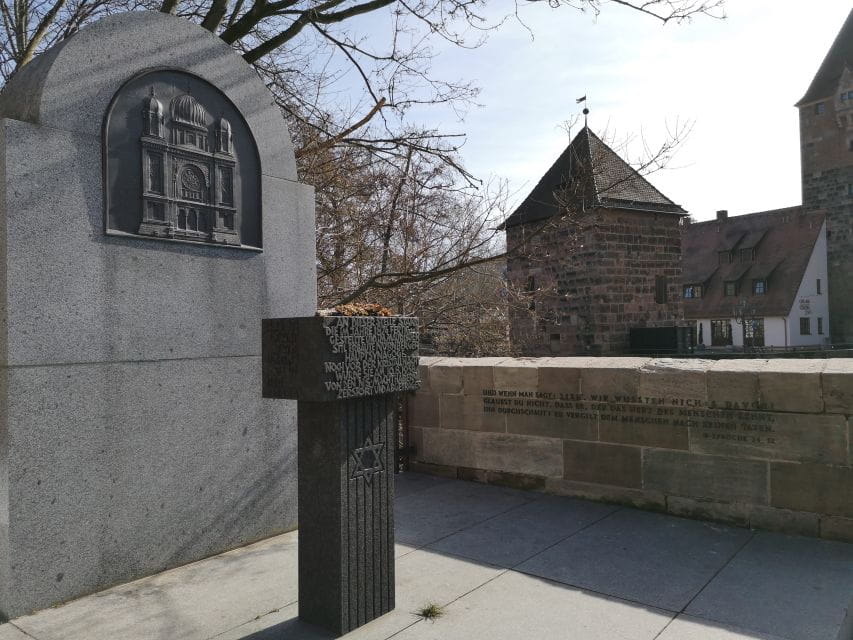
Can I Take Photos During the Tour?
Visitors are generally allowed to take photos during the tour, though they should check with the guide first. Photography may be restricted in certain sensitive areas for privacy or preservation reasons.
Is the Tour Suitable for Children?
The tour may not be suitable for young children, as it covers sensitive historical topics related to the Third Reich. Parental discretion is advised, and alternative family-friendly tours of Nuremberg may be more appropriate for younger visitors.
What Is the Cancellation Policy for the Tour?
The tour has a flexible cancellation policy – customers can cancel up to 24 hours prior to the start time for a full refund. There may be fees for last-minute cancellations or no-shows.
Can I Bring My Own Food and Drinks?
You can bring your own food and drinks on the tour, but they are not included in the tour price. The tour includes a professional guide and a guided tour, but not any meals or refreshments.
Are There Any Dress Code Requirements for the Tour?
There are no specific dress code requirements for this tour. Visitors can wear comfortable clothing and footwear suitable for walking during the 3-hour duration. The tour is wheelchair accessible, so appropriate attire is not a constraint.
Recap
Nuremberg’s dark past as a Nazi stronghold is palpable. Visitors can explore the infamous sites that bore witness to the regime’s atrocities, from the Jewish Quarter to the Zeppelin Field.
The Nuremberg Trials‘ legacy serves as a stark reminder of the need to confront history and prevent such horrors from ever happening again.
This tour offers an immersive, educational experience that sheds light on a troubling chapter in Germany’s past.
More Historical Tours in Nuremberg
More Tours in Nuremberg
- Nuremberg: Tunnels and Secret Passages in the City Wall Tour
- Stein: Public guided tour of the “Old Mine” museum
- Old Town Nuremberg: Historical tour with a local guide
- Tour en español al Campo Zeppelin
- Nuremberg:Complete Tour! Castle/Old Town/World War history
- Nuremberg Old Town and Nazi Rally Grounds Walking Tour
More Tour Reviews in Nuremberg
- Nuremberg: 1-day ticket Germanisches Nationalmuseum
- Nuremberg: Castle and Old Town Tour – incl. admission tickets and red beer tasting
- Nuremberg Private Premium Tour with Night PubCrawl
- Nuremberg: Historical Rock Cellars Tour
- Nuremberg: Theater Tour “The Executioner’s Wife”
- Nuremberg: 3-Hour St. Johannis Food Tour in German
Not for you? Here's more things to do in Nuremberg we have recnetly reviewed
- Nürnberg: Scavenger Escape Room Experience: Gangsta’s Cage
- Nürnberg: Secret Surgery Escape Room Game
- Tour del tercer Reich por Núremberg en español
- Nuremberg: Art and Culture revealed by a Local
- Nuremberg’s Mystery Morning: Breakfast & Escape Game
- Nuremberg: The Old Town in Evening Light – IN GERMAN
- Nuremberg: Guided BYO Bike Tour
- Nuremberg: Theater Tour “Of nightwatchmen, executioners, and nymphs”
- Nuremberg: Medieval Time Travel for Kids
- Nuremberg Christmas 3-Hour Christkindles market Walking Tour
- Nuremberg – Old town Historic Walking tour
- Nuremberg: 1-day ticket Germanisches Nationalmuseum
